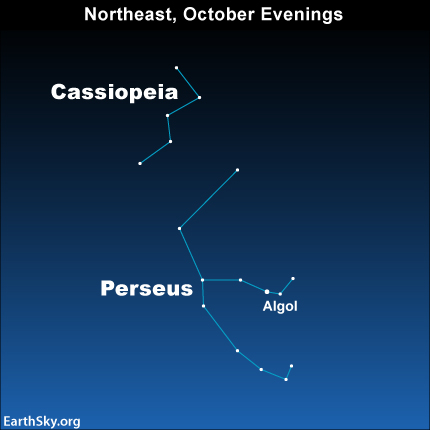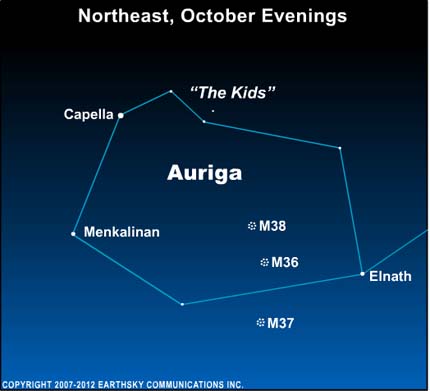Fall Constellations
Andromeda and Pegasus

Pegasus, also known as “The Great Square,” is visible at the night sky’s zenith during the fall. The Andromeda constellation is directly attached to one of the points of Pegasus’s square.
Andromeda is famous for M31, known commonly as The Andromeda Galaxy, which is the closest spiral galaxy to the Milky Way. It is also the brightest galaxy in the sky, and can be seen with the naked eye. The Andromeda Galaxy is positioned between the star Schedar, in Cassiopeia, and the star Mu Andromedae, in Andromeda.
Perseus, Andromeda and Pegasus are all part of the same Greek myth as Cassiopeia and Cepheus. Cassiopeia and Cepheus were rulers of Ethiopia. Queen Cassiopeia boasted that she was more beautiful than the Nereid sea goddesses. The Nereids complained to Posiedan, who sent a sea monster named Cetus to attack Ethiopia. Cassiopeia and Cepheus sought the advice of a soothsayer, who told them that the only way to stop Cetus was to leave their daughter, Princess Andromeda, as a sacrifice for the monster. Reluctantly, they agreed. Perseus, a hero, happened to be passing by on his flying horse, Pegasus, where Andromeda was left out for Cetus. He killed the sea monster and rescued Andromeda. The two fell in love, and escaped together on Pegasus. This is why Andromeda is depicted on Pegasus in the night sky – to immortalize her heroic rescue.
Perseus

Perseus seems to follow the constellation Cassiopeia across the sky, and is best seen in the northeastern autumn skies.
Although it has been nicknamed “The Demon Star,” there is nothing sinister about Perseus’s star Algol. However, Algol is a variable binary star, meaning that it is actually two stars rotating around each other. A full rotation takes the two stars every 2 days and 20 hours. Algol’s brightness changes, depending on which star orbits in front.
Before Perseus rescued Andromeda, he was a great hero. As the son of Zeus and the mortal Danae, Perseus was born with many gifts. He is best known for his killing of the hideous Gorgon, Medusa, who turned people to stone, simply by looking at them. Perseus then used the Gorgon’s head to turn the Titan, Atlas, who held up the sky, into a large stone mountain. In the constellation, Algol represents the Gorgon’s head, so that Perseus’s triumph may be immortalized.
Auriga

Auriga is located near Perseus in the night sky. It is easy to pick out Capella, the sixth brightest star in the autumn night sky, one of the points of a pentagon-like shape, which is the constellation Auriga. Capella is a star that is very similar to our sun, and is classified as a golden star. Capella is sometimes referred to as “The Goat Star,” and the three stars next to it are called “The Kids.”
Within Auriga, there are several star clusters, identified as M36, M37 and M38. These can be seen with binoculars.
According to Greek Mythology, Auriga was the lame son of Hephaestus, god of the forge and craftsmen. Because Auriga couldn’t walk, he tamed four horses and built a chariot to carry himself around on. To reward his cleverness, Auriga was placed in the stars on his chariot by the gods.
To read more about these constellations and get the latest update on astronomical news, visit EarthSky.
Download a PDF Version of this information
